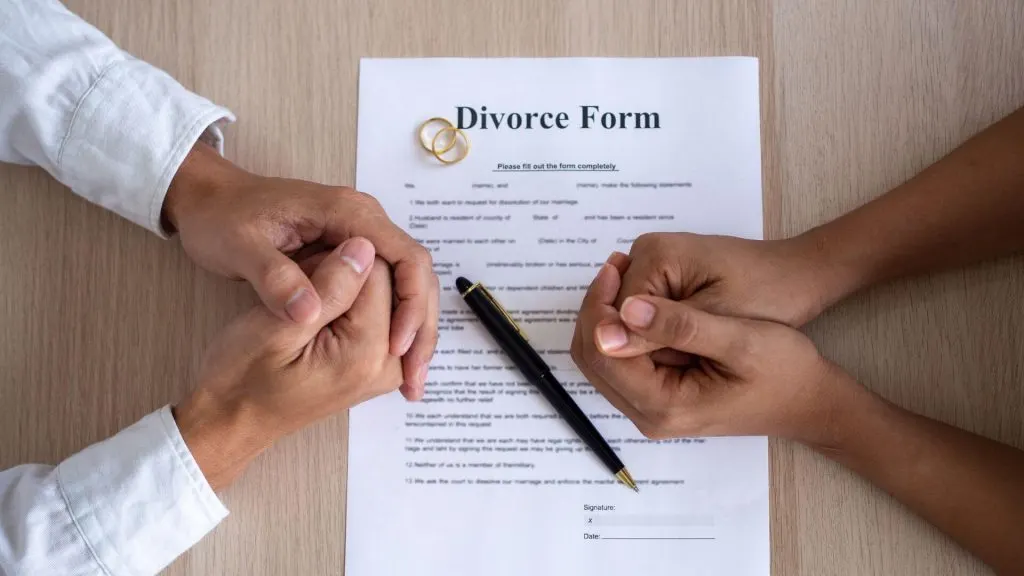Divorce is undeniably one of life’s toughest challenges. It’s a decision that’s never made lightly, especially when children are involved. Sometimes, despite our best efforts, marriages reach a point where parting ways becomes a necessary step toward a healthier future for everyone involved. For those contemplating or currently navigating the dissolution of their marriage, understanding the intricacies of the divorce process is crucial.

Step 1: Contemplating Divorce
Before initiating divorce proceedings, individuals should carefully evaluate their circumstances and consider available alternatives. Marriage counseling, legal separation, or mediation might be options to explore before deciding on divorce.
According to the Los Angeles divorce lawyers at Fernandez and Karney, mediation may be your best option if you and your spouse can agree on some, but not all, aspects of your divorce. In mediation, you, your spouse, and your lawyer sit down with a neutral third party known as a mediator who works with you and your spouse, both individually and together, to help you move toward mutually-agreeable solutions.
Gathering essential documents such as financial records, marriage certificates, and any existing prenuptial agreements is a prudent step in preparation. Take the necessary time for self-reflection, evaluate emotions, and seek support from trusted friends or family members. Collecting pertinent documents, including financial records and marriage certificates, becomes integral in building a comprehensive foundation for potential legal proceedings.
Step 2: Filing the Petition
The divorce process typically begins when one spouse, known as the petitioner, files a petition for divorce with the appropriate court in their jurisdiction. It contains essential information that sets the groundwork for the divorce proceedings. It outlines details such as:
Grounds for Divorce: The petition typically states the grounds or reasons for seeking a divorce. Depending on the jurisdiction, grounds can vary from irreconcilable differences (no-fault) to specific reasons like adultery, cruelty, abandonment, or other legally recognized causes (fault-based).
Relief Sought: The petition requests specific relief, including but not limited to child custody, visitation arrangements, child support, spousal support (alimony), division of marital property, and allocation of debts. It’s crucial to articulate your needs and preferences as clearly and accurately as possible in the petition.

Step 3: Service of Process
After the petition is filed, the respondent—the other spouse—must be officially served with the divorce papers. Service of process ensures that the respondent is informed of the legal proceedings and has the opportunity to respond.
Step 4: Response and Counterpetition
Upon receiving the divorce papers, the respondent has the opportunity to respond. This response may contest the grounds for divorce or introduce a counterpetition outlining the respondent’s requests for relief. This stage often initiates negotiations between the parties.
Upon receipt of the divorce petition, the responding spouse, known as the respondent, faces crucial decisions regarding how to address the claims and requests put forth by their partner. The respondent has two options:
Response: The respondent has the option to file a formal response to the petition. This document can either admit or deny the allegations made by the petitioner regarding the grounds for divorce or any other claims put forth. It serves as the respondent’s means to address the issues raised in the petition and assert their stance on those matters.
Counterpetition: Alternatively, the respondent may file a counterpetition. This document outlines the respondent’s requests for relief, which might differ from or expand upon those presented in the petitioner’s original filing. For instance, if the petitioner requested sole custody of the children, the respondent might counter with a request for joint custody.
The response serves as a platform to outline their stance, either by directly responding to the allegations in the petitioner’s filing or by initiating a counterpetition to assert their own requests and concerns.
Step 5: Discovery and Negotiation
During this phase, both parties exchange information and documents related to assets, debts, income, and other pertinent matters. Negotiations, mediation, or collaborative divorce proceedings may occur to reach agreements on custody, support, and property division. If necessary, experts like financial advisors or child psychologists might be consulted to aid in decision-making.

Step 6: Settlement or Trial
Reaching a settlement agreement marks a significant milestone in the divorce process, signaling mutual understanding and agreement on various crucial aspects. This comprehensive document meticulously outlines the terms and conditions jointly agreed upon by both parties. From child custody arrangements and visitation schedules to the division of assets and financial support, the settlement agreement serves as a blueprint for moving forward post-divorce.
Conversely, in cases where reaching an agreement proves elusive, the divorce case proceeds to trial. Here, a judge assumes the responsibility of adjudicating unresolved matters after a thorough examination of evidence, testimonies, and arguments presented by both sides. During trial The trial phase aims to provide resolution to outstanding issues and concludes with the judge’s decisions on those matters, shaping the final terms of the divorce
Step 7: Finalizing the Divorce
Once all issues are resolved—either through a settlement or trial—the court reviews the settlement agreement or trial outcome. If approved, a final decree of divorce is issued, officially terminating the marriage. The final decree outlines the terms of the divorce, including property division, child custody, visitation schedules, and support obligations.
Step 8: Post-Divorce Matters
After the divorce is finalized, there are several important post-divorce considerations. Adhering to the terms of the decree, such as custody arrangements and support payments, is crucial. Additionally, updating legal documents like wills, trusts, and beneficiaries is necessary to reflect the changed marital status.
Navigating the divorce process is a complex and emotionally challenging experience. It involves legal intricacies, negotiations, and often, intense emotions. Seeking guidance from a knowledgeable attorney specializing in family law is highly recommended. A legal professional can provide valuable advice, ensure legal rights are protected, and help individuals navigate the process with greater ease.

Jessi is the creative mind behind The Coffee Mom, a popular blog that combines parenting advice, travel tips, and a love for all things Disney. As a trusted Disney influencer and passionate storyteller, Jessi’s authentic insights and relatable content resonate with readers worldwide.
